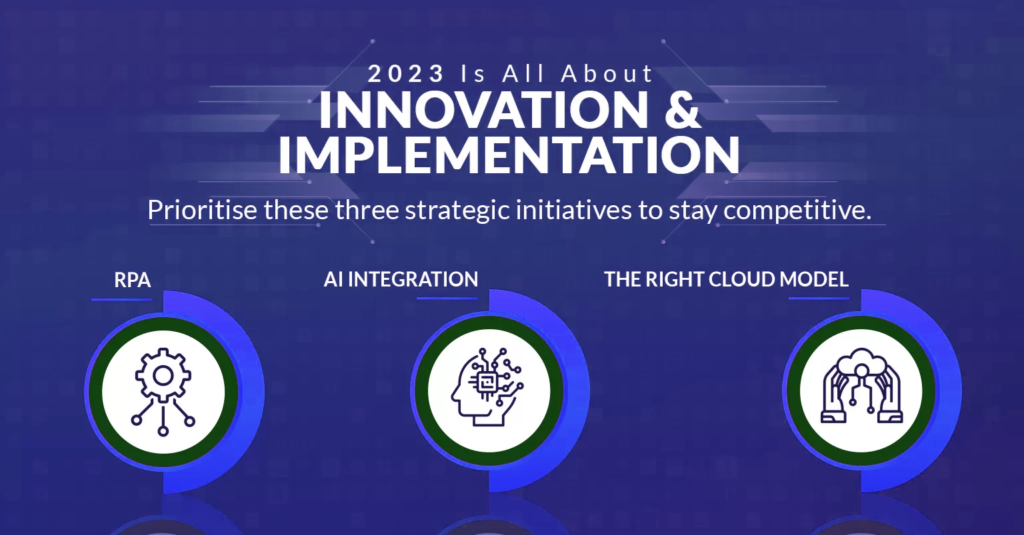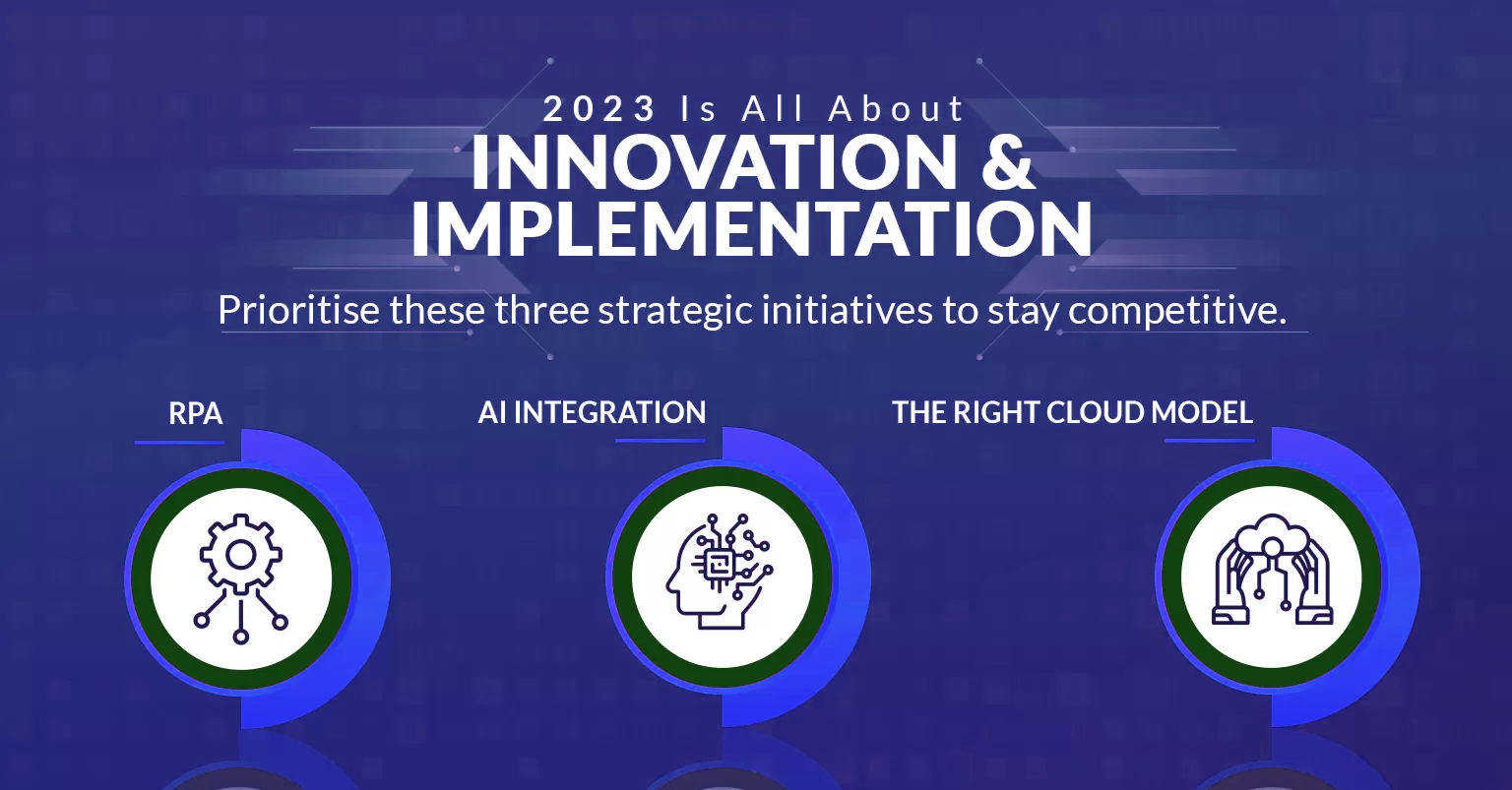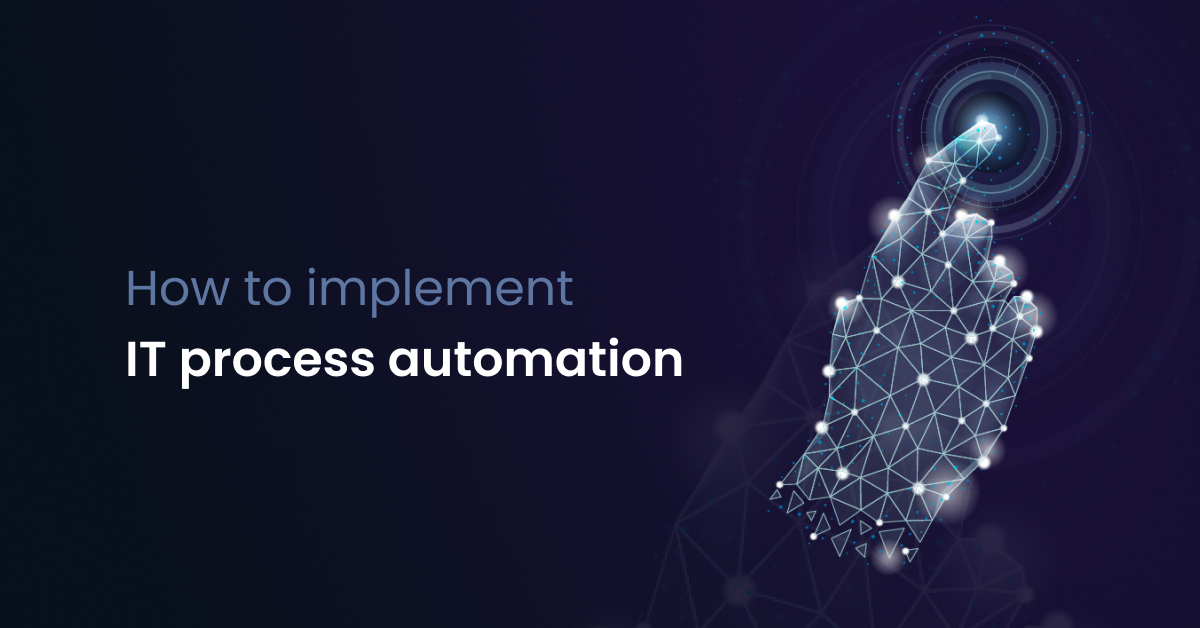IT leaders are constantly tasked with finding new technologies that can keep up with the ever-changing business environment. The strategies and solutions for digital transformation must change to enable future success.
In the grand scheme of things, with every passing decade and every new year comes an inevitable wave of change that influences society and our lives considerably. This is a fact that cannot be ignored or denied. With this in mind, three strategic initiatives to prioritize in 2023 are presented below as keys for various individuals across different fields to leverage for the next 10 years.
Digital Transformation in 2023

The change focuses on the various opportunities that advancements in technology and automation can provide. This includes new fields where jobs are being created and how they will be different from previous generations. The digital transformation strategy brings new concepts and ideas that show how talent development will be among the key priorities for creating a strong workforce. IT leaders should focus on three specific digital transformation initiatives by prioritizing them in 2023: the right cloud model, instituting artificial intelligence (AI) into business functions and leveraging scale automation with AI and RPA.
1. The right cloud model:
In today’s digital world, it is difficult for enterprises to operate without cloud services. But it’s not just about access; hosting the right applications and data makes a huge difference for business growth. Today, a hybrid cloud model is the best path to follow in order to reap the benefits of both public and private clouds without being left behind or drowning in vendor lock-ins.
The right cloud model will get enterprises to leverage the benefits of public and private clouds as required in order to take advantage of each particular environment’s strengths. This digital transformation provides enterprises with access to a comprehensive mix of features without being locked into a particular system.
2. Instituting artificial intelligence (AI) into business functions
The importance of AI in business should not be underestimated by professionals from all industries, including the IT industry. In fact, according to a study performed by PwC, AI is expected to add $15.7 trillion to the global economy by 2030.
With all its revolutionary power, AI has become an integral part of business processes and functions across industries, including the IT industry. This is because AI provides several advantages in terms of optimising business processes and increasing sales via increased efficiency by automating tasks that keep employees unnecessarily occupied.
3. Leveraging Scale Automation with AI and RPA
The third initiative for IT leaders to focus on is leveraging Scale Automation with AI and RPA. Despite the benefits that come with AI, businesses need to implement it in a strategic and efficient manner so that it can be leveraged effectively. It will reach its full potential if it is implemented correctly.
The combination of AI and RPA provides enterprises with an incredible opportunity to perform IT operations and tasks more efficiently, economically, and at scale. The combination enhances the ability to optimise business functions and improve operational efficiencies. AI can be used for data automation, business process automation, and operational management, among others. Through the use of RPA and AI, enterprises can achieve these goals.
The evolution of digital technology and applications has grown so much that businesses now have to consider how they will further adapt to change and usher in a digital transformation revolution in their organizations.
Conclusion
The creative use of the cloud model, AI and automation, within the system will provide businesses with greater efficiency, an improved customer experience, and more productive working environments.
It will result in a more effective workforce, which in turn improves operational efficiency. These three strategies, and certainly more digital transformation initiatives, are a chance for businesses to improve productivity and utilise more efficient technology to manage their work environment.
























